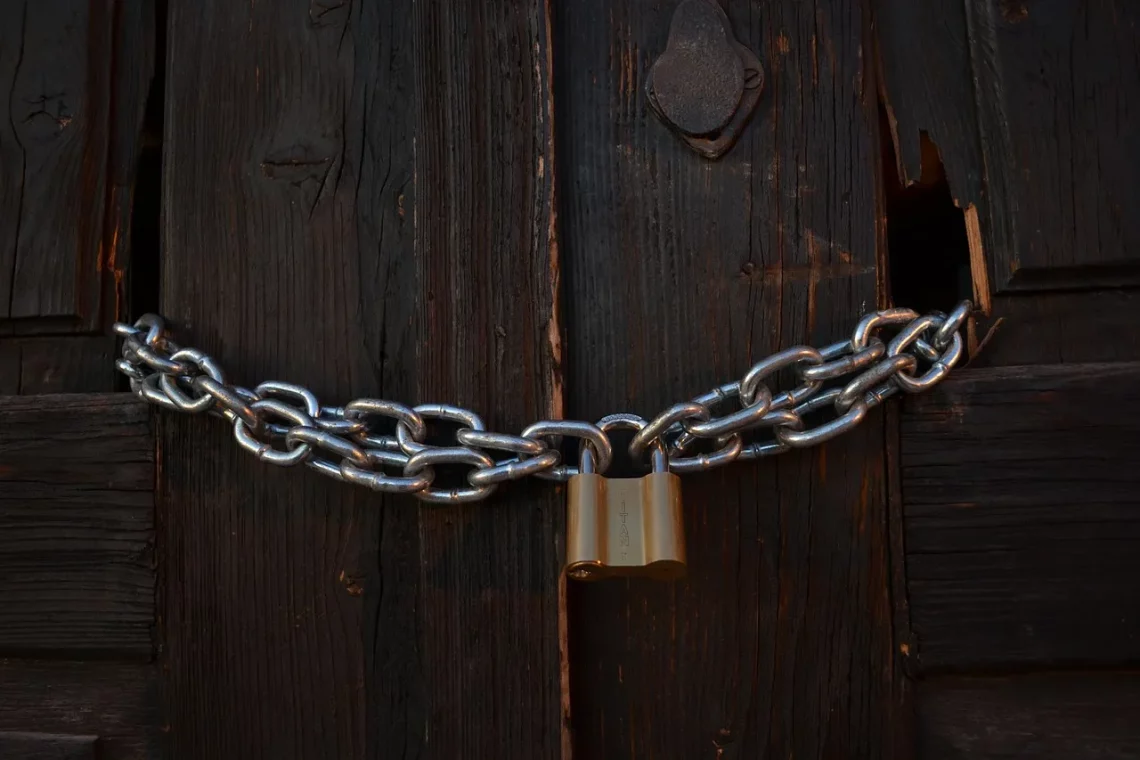
Effective Pet Barriers: Keep Your Home Safe and Organized
Creating a pet-friendly home can often feel like a balancing act between providing a safe and welcoming environment for your furry friends while maintaining order and cleanliness. Pets, with their boundless energy and curiosity, often find ways to explore areas of the house that may not be suitable for them. Whether it’s a rambunctious puppy, a curious kitten, or even an adventurous rabbit, keeping these inquisitive creatures contained within safe boundaries is essential for their well-being and the integrity of your home.
Effective pet barriers serve as a crucial solution, allowing you to designate specific areas for your pets while keeping them away from potentially dangerous or off-limits spaces. These barriers not only protect your pets but also help to organize your living space, ensuring that your home remains both functional and aesthetically pleasing. Choosing the right type of barrier can depend on several factors, including the size and temperament of your pet, the layout of your home, and the specific areas you wish to restrict access to.
In this article, we will explore the various types of pet barriers available, their benefits, and tips for choosing the right one for your needs. With the right approach, you can create a safe haven for your pets while ensuring that your home remains a comfortable and organized sanctuary.
Types of Pet Barriers
When it comes to pet barriers, there are several types to consider, each designed for specific needs and environments. Understanding the options available can help you make an informed decision that best suits your home and pets.
1. **Baby Gates**: Often used for children, baby gates are also incredibly effective for pets. They come in various sizes and materials, including wood, metal, and plastic. These gates can be installed in doorways or at the top of stairs to prevent pets from accessing certain areas of the home. Many models are adjustable, making them versatile for different widths.
2. **Pet Playpens**: If you want to create a designated play area for your pet, a playpen can be an excellent solution. These enclosures provide a safe space for your pet to play, exercise, and relax without the risk of wandering into other rooms or getting into trouble. Playpens are particularly useful for puppies and kittens, who need supervision while they explore their surroundings.
3. **Retractable Barriers**: For those looking for a more discreet option, retractable barriers can be a great choice. These barriers can be pulled across doorways or hallways when needed and retracted when not in use. This flexibility allows you to maintain an open space while still having the option to restrict access when necessary.
4. **Pet Fences**: For outdoor areas, pet fences are essential to keep your pets contained and safe. These fences come in various styles, including traditional wood and chain-link, as well as more modern invisible fences that use a boundary collar system. Selecting the right type of fence will depend on your yard’s layout and the size and behavior of your pets.
5. **Furniture Barriers**: Sometimes, simply rearranging furniture can create natural barriers. For example, placing a sofa or chair in front of a staircase can deter pets from climbing. While this may not be a formal solution, it can be an effective and aesthetically pleasing way to manage space in your home.
Choosing the right type of barrier will depend on your specific needs and the behavior of your pets. Each option has its unique advantages and can help create a safer environment for your furry companions.
Benefits of Using Pet Barriers
Incorporating pet barriers into your home offers numerous benefits, both for your pets and for the overall organization of your living space. Understanding these advantages can help reinforce the importance of investing in effective barriers.
1. **Safety**: The primary function of pet barriers is safety. By restricting access to hazardous areas, such as staircases or kitchens, you can significantly reduce the risk of accidents. Pets can easily get into trouble by ingesting harmful substances or falling from heights. Barriers help prevent these scenarios, giving you peace of mind.
2. **Training Aid**: Pet barriers can also serve as valuable tools for training. By designating specific areas where pets are allowed or not allowed, you can help them learn boundaries. This structure can be especially beneficial for puppies and kittens, who are still learning about their environment.
3. **Organization**: Keeping pets contained can help maintain a more organized home. Without barriers, pets may knock over items, chew on furniture, or scatter their toys throughout the house. By using barriers, you can create designated play areas, making it easier to manage your living space.
4. **Stress Reduction**: Both pets and owners can experience reduced stress when boundaries are clear. Pets often feel more secure knowing their limits, while owners can relax knowing their pets are safe and contained. This mutual sense of security contributes to a more harmonious home environment.
5. **Flexibility**: Many modern pet barriers are designed to be flexible and adjustable. This means you can modify your setup as your pet grows or as your living situation changes. For instance, a playpen can be expanded or reduced in size, while retractable gates can be opened or closed as needed. This adaptability makes pet barriers a long-term investment.
In conclusion, the benefits of using pet barriers are multi-faceted, enhancing both the safety of your pets and the organization of your home. Investing in the right barriers not only contributes to a safer living environment but also helps foster a positive relationship between you and your pets.
Choosing the Right Barrier for Your Home
Selecting the appropriate pet barrier for your home requires careful consideration of various factors. Each pet has unique needs, and the layout of your home can significantly influence which type of barrier will work best.
1. **Assess Your Space**: Before purchasing a barrier, assess the areas you want to restrict. Measure doorways, hallways, and any other locations where you plan to install a barrier. This information will help you choose a barrier that fits well within your space without being too obtrusive.
2. **Consider Your Pet’s Size and Behavior**: The size and temperament of your pet play a crucial role in barrier selection. For larger dogs, sturdy gates or fences are necessary, while smaller pets may require different types of barriers. Additionally, consider your pet’s behavior; if they are prone to jumping or climbing, opt for higher barriers or ones with secure locking mechanisms.
3. **Material Matters**: The material of the barrier is also important. Wooden gates are durable and can blend well with home décor, while metal gates are often more robust and suitable for larger pets. Plastic barriers can be lightweight and easy to move but may not withstand aggressive pets. Choose a material that suits your aesthetic preferences and provides the necessary strength for your pets.
4. **Ease of Use**: Consider how easy it will be to open and close the barrier. If you frequently need to pass through a gate, look for options with simple mechanisms that allow for quick access. Some gates come with one-handed operation features, which can be particularly convenient when carrying items or managing multiple pets.
5. **Aesthetic Appeal**: While functionality is crucial, the visual aspect of the barrier should not be overlooked. Choose barriers that complement your home’s interior design. There are many stylish options available that can blend seamlessly with your décor, enhancing your home’s overall appearance.
By carefully considering these factors, you can choose a pet barrier that meets your needs while keeping your pets safe and your home organized.
Maintenance and Care for Pet Barriers
Once you have chosen the right pet barrier for your home, it’s essential to maintain it properly to ensure its longevity and effectiveness. Regular care can prevent wear and tear and keep your barriers looking their best.
1. **Regular Inspections**: Periodically check your barriers for any signs of damage, such as cracks, loose parts, or wear. Addressing these issues promptly can prevent accidents and ensure the barrier remains effective in keeping your pets contained.
2. **Cleaning**: Depending on the material, your barriers may require regular cleaning to keep them looking new. Wooden barriers can be wiped down with a damp cloth, while metal and plastic barriers can often be cleaned with mild soap and water. Make sure to avoid harsh chemicals that could be harmful to your pets.
3. **Adjustments**: As your pet grows or as your living situation changes, you may need to make adjustments to your barriers. This could involve moving a gate to a different location or expanding a playpen. Stay flexible and make changes as necessary to accommodate your pet’s needs.
4. **Storage**: If you use retractable barriers or temporary playpens, consider how you will store them when not in use. Keeping them in a dry, safe place can prevent damage and extend their lifespan.
5. **Replacement**: Over time, even the sturdiest barriers may need replacement. If you notice that a barrier is no longer secure or has become difficult to use, it may be time to invest in a new one. Don’t compromise on safety; ensuring your barriers are in good condition is essential for your pets’ well-being.
In summary, maintaining your pet barriers is vital to their effectiveness and durability. By conducting regular inspections, cleaning, and making necessary adjustments, you can ensure that your barriers continue to serve their purpose in keeping your home safe and organized.
In conclusion, effective pet barriers are essential for creating a safe and organized home environment. By understanding the types of barriers available, their benefits, and how to choose and maintain them, you can enhance the safety and comfort of both your pets and your living space. Investing in the right barriers allows you to enjoy a harmonious home while providing your furry friends with the freedom to explore safe areas of their environment.
**Disclaimer**: This article is for informational purposes only and should not be considered medical advice. Always consult a qualified healthcare professional regarding any health-related issues.




